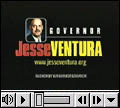
|
||||
 |
||||
|
|
|||
|
AD WATCH NEWS FEATURES SIX: November 2, 1998: Ventura runs his first ad of the campaign while Coleman and Humphrey go on the offensive. Featured Ads: Jesse Ventura FIVE: October 2, 1998: DFL airs ad taking Coleman comments out of context and Coleman responds; Roger Moe runs his first ad. Featured Ads: DFL: Makes Sense | Coleman Farm Response | Roger Moe FOUR: September 17, 1998: Republican ads attack Humphrey's legislative record from 25 years ago. Featured Ad: The Past (Republican Party of Minnesota) THREE: September 9, 1998: Ted Mondale produces first attack ad of the election; Skip Humphrey and Doug Johnson begin airing their television spots. Featured Ads: Ted Mondale | Skip Humphrey | Doug Johnson TWO: August 28, 1998: Mark Dayton is outspending his opponents; strategies for the candidates and parties now emerging. Featured Ads: Mark Dayton | Jaws and A New Era (Republican Party of Minnesota) | Mike Freeman ONE: July 20, 1998: Early ads set tone for the coming season; watchdog group seeks balanced presentations. Featured Ads: Doug Johnson | Norm Coleman |
| TELEVISION ADS |
|
| Clay Steinman, chair of the communications
studies department at Macalester College, says it's an effective ad because it
presents Ventura's message in simple terms.
Steinman: And it sets up Jesse Ventura as this heroic action figure. So in that sense, I think it's a brilliant ad. It doesn't tell people how you can both cut taxes and improve schools at the same time - it's not a cerebral ad, it's not aimed at that! |
|
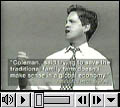 View a QuickTime (1.9 M) version of this ad. Get help playing QuickTime movies. |
Public affairs consultant Dean
Alger says this ad - which sparked what he calls a farm-issues food fight - violates
the campaign advertising code developed by the Minnesota Compact
Alger: In the middle of the ad we've got all this sunshiney farm stuff, and then suddenly it goes to grainy black and white, and we've got video of Coleman which is I think slowed down and there's no sound. It's more of that distorted video of the opposing candidate that violates the campaign ad code of the Minnesota Compact. |
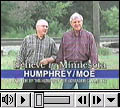 View a QuickTime (2.1 M) version of this ad. Get help playing QuickTime movies. |
Analyst Clay Steinman says the
problem with the Moe ad is it lacks specifics - like the other farm ads, it puts
image before content.
Steinman: What the candidates seem to be telling us is what governing style they have. And what we need to know is what are they going to propose to the Legislature on the specific problems that face Minnesotans. |
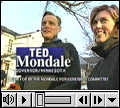 View a QuickTime (1.9 M) version of this ad. Get help playing QuickTime movies. |
Public affairs consultant Dean Alger says Mondale's ad violates the campaign advertising code developed by the Minnesota Compact, an election watchdog group. The code asks candidates to use their voice or likeness in at least 50 percent of the ad, so voters will associate the candidate with the attack. In Mondale's ad, he only appears in the closing shot. |
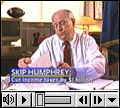 View a QuickTime (1.9 M) version of this ad. Get help playing QuickTime movies. |
Humphrey manages to work in a
reference to the state's tobacco settlement, which he achieved, and talks about
"responsible" tax cuts, which Steinman says may be an effort to position himself
against Republican Norm Coleman, who's also calling for tax cuts.
Steinmen: Visually, it's designed to give a positive impression of Humphrey - there's a lot of green, there's kids playing, there's older people, there's blue-collar people, there's a lot of ball being played. Read September 9, 1998 story featuring this ad |
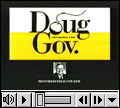 View a QuickTime (1.9 M) version of this ad. Get help playing QuickTime movies. |
Alger: What's delightful
about them to me is they hark back to the original ads, at the very beginning,
the dawn of TV age, and the first ads we ever saw. They're pure political speech
at an actual event. And the first ad is especially nice, because you see some
real passion.
But analyst Clay Steinman says because the ads only appeal to rural Minnesota, Johnson seems to be campaigning for the State Legislature, not the governor's seat. Read September 9, 1998 story featuring this ad |
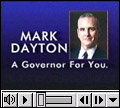 View a QuickTime (1.7 M) version of this ad. Get help playing QuickTime movies. |
Steinman: Health care is
such a complicated issue, and it's such an important issue to people, that I
think that it's only fair that if he's going to promise people the moon, he tells
them what kind of rocket ship he's going to build for them.
Dean Alger agrees that Dayton needs to offer more specifics, but says Dayton should be commended for running ads with more substance and striking proposals than any other candidate. |
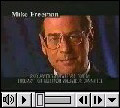 View a QuickTime (1.7 M) version of this ad. Get help playing QuickTime movies. |
Analysts Dean Alger and Clay Steinman
say this ad, like many in the campaign, lacks specifics and doesn't address many
of Minnesota's pressing educational issues such as funding, standards, and testing.
Alger says the only item Freeman truly takes a stand on is smaller class sizes.
Alger: Frankly, it's a series of very generic value statements that it's hard to find anybody who disagrees with him - dealing with violence in the schools, and we need to teach discipline and values. Terrific, Mike. What in the world does that mean in practice for actual school teachers in actual classrooms? Frankly, this tells me nothing. |
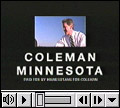 View a QuickTime (1.7 M) version of this ad. Get help playing QuickTime movies. |
Steinman says Coleman is trying to appeal to rural Minnesotans, who may be skeptical about voting for someone from Brooklyn. But Steinman says Coleman's ad gives no indication of his stand on the issues. He says in the early part of a campaign, when candidates are trying to establish themselves through their ads, voters get style over substance. |
|
RADIO ADS |
|
|
Listen: Farm Response Norm Coleman RealAudio 14.4 |
Analyst Clay Steinman, a communications studies professor at Macalester College, says it's not clear that Coleman's positions would benefit family farmers. Steinman: Well, Coleman's trying to do something that's pretty tricky - he's trying to say he's pro-farmer without differentiating between corporate farmers and small farmers. His policies seem to be pro-corporate farmers - he stresses no limits on livestock feedlots. |
|
Listen: The Past (Republican Party of Minnesota) RealAudio 14.4 |
Public affairs consultant Dean Alger says the problem is that the ad obscures the difference between Humphrey's legislative votes and his record as attorney general. Alger says viewers may assume that both represent Humphrey's current views. Alger says the Minnesota Compact's advertising code says it's legitimate to criticize a candidate's record, but not to take issues out of context. |
|
Listen: Doug Johnson (Johnson campaign) RealAudio 14.4 |
Steinman: Well, it's cute, you know. The ads are cute. They also are trying to position
the candidate as someone who's not a city slicker.
Clay Steinman says the Johnson spots have the same whimsical quality as Senator Paul Wellstone's green bus ads - both were produced by award-winning adman Bill Hillsman. Still, Steinman wonders what frogs have to do with the issues facing Minnesota. |
|
Listen: Jaws (Republican Party of Minnesota) RealAudio 14.4 Listen: A New Era (Republican Party of Minnesota) RealAudio 14.4 |
Steinman: These ads seem to me particularly troublesome, because they make it very difficult to separate the wheat from the chaff as far as the truth is concerned. They play with language. I call them wise-guy ads, because they're trying to score points and they're not interested in informing the public. |
|
THE COMMENTATORS
Dean Alger received his BA from Whittier College in Whittier California, and his Ph.D. in political science from the University of California at Riverside. Dr. Alger is author of The Media and Politics, 2nd ed., published in fall, 1995, co-author of Crosstalk: Citizens, Candidates and Media in a Presidential Campaign, published in April, 1996, and Author of "Megamedia", published this fall; he is also author or co-author of numerous professional papers on the political advertising, the media's role in elections, and related subject matter. He is a former Fellow at the Shorenstein Center on the Press, Politics and Policy in the Kennedy School of Government at Harvard University. He has taught college in Minnesota and North Dakota, has extensive experience serving as an analyst for local media, and has moderated many panels and discussions of public affairs and candidates' debates.
Clay Steinman is professor and chair of Communication Studies
at Macalester College in St. Paul, where he teaches media
analysis and theory as well as film and cultural studies. He teaches
about racism and the media in Macalester's new program
in Comparative North American Studies. As a journalist, he worked for
The Nation and and as an editor and reporter for newspapers
and news agencies. Rutgers University Press will publish
his new book, Consuming Environments:
Television and Commercial Culture, co-authored by Mike
Budd and Steve Craig, in February. He did his undergraduate
work at Duke University and graduate studies at
Columbia and New York universities.
|
|

